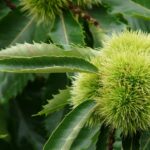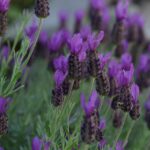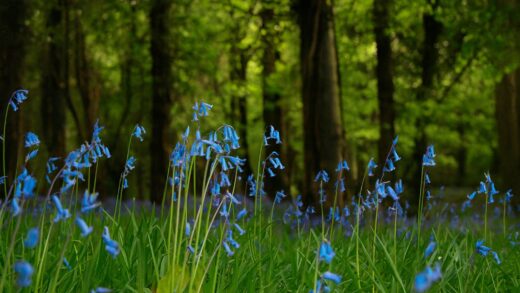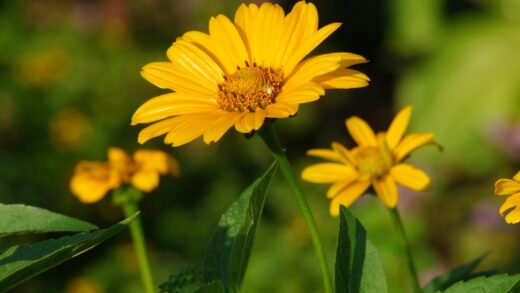Strategic pruning and trimming are essential maintenance practices that transform a good Bidens ferulifolia specimen into a truly spectacular one. While this plant is naturally inclined to bloom profusely, a bit of timely intervention can significantly enhance its performance, promoting a denser, more compact growth habit and encouraging an even greater abundance of flowers. These techniques are not about restricting the plant, but rather about guiding its growth to create a fuller, healthier, and more aesthetically pleasing display. From a simple pinch early in the season to a more substantial mid-summer trim, pruning is a powerful tool for maximizing the floral potential of this vibrant annual.
The primary goal of most pruning activities for the gold of the balcony is to encourage branching. The plant produces flowers at the tips of its stems. Therefore, the more stems a plant has, the more flowers it will ultimately produce. When you trim or pinch off the growing tip of a stem, you remove the terminal bud that produces hormones that suppress growth further down the stem. This removal allows the lateral or side buds located at the leaf nodes below the cut to break dormancy and develop into new stems. This simple action effectively turns one stem into two or more, leading to a much bushier plant.
This practice is particularly effective early in the growing season, shortly after the young plant has been planted and is beginning to establish itself. Pinching back the tips of the main stems when they are about 10-15 centimeters long will lay the foundation for a dense, well-branched structure that will support a profusion of blooms later in the season. Although it may seem counterintuitive to remove parts of a young plant, this early sacrifice pays huge dividends in the form of a much fuller and more floriferous specimen.
Beyond promoting bushiness, regular trimming also helps to maintain the plant’s shape and size, which is especially important in mixed container plantings. The vigorous, trailing habit of Bidens can sometimes overwhelm its less aggressive neighbors. A light shearing throughout the season can keep it in its designated space and ensure a balanced and harmonious composition. Pruning is thus both a horticultural technique for improving performance and an artistic tool for shaping your container designs.
The technique of pinching
Pinching is the simplest and most fundamental pruning technique for encouraging a bushy Bidens plant. It is best performed early in the season on young, actively growing plants. The process involves using your thumb and forefinger to simply pinch off the top 1-2 centimeters of a new stem, right above a set of leaves. Alternatively, for a cleaner cut, you can use a small, sharp pair of scissors or pruning snips. This small action has a significant impact on the plant’s growth habit.
More articles on this topic
When you pinch the terminal bud, you are removing the source of a plant hormone called auxin, which promotes apical dominance. Apical dominance is the phenomenon where the central, main stem of the plant grows more strongly than the lateral stems. By removing this dominant bud, the flow of auxin is interrupted, which allows the dormant lateral buds located at the nodes below the pinch to activate and grow into new branches. This creates a plant that grows outwards, becoming fuller and wider, rather than just upwards and longer.
This process can be repeated on the new side shoots once they have grown a few inches long. This secondary pinching will further multiply the number of stems, leading to an exceptionally dense and compact plant. While this early-season pinching will slightly delay the onset of the first flowers, the resulting increase in the number of flowering stems will lead to a far more dramatic and sustained floral display once the blooming begins in earnest.
Pinching can also be used throughout the growing season on any stems that appear to be growing too long or are making the plant look unbalanced. It is a gentle way to continuously shape the plant and encourage new growth from the interior of the plant, preventing it from becoming bare or open in the center. This simple, ongoing maintenance takes only a few moments but makes a world of difference in the overall appearance of the plant.
Mid-season rejuvenation trimming
Even with the best care, it is not uncommon for vigorous annuals like Bidens to start looking a bit tired, leggy, or sparse in the middle of summer, especially during periods of intense heat. The plant may have a flush of blooms at the tips of long, trailing stems, but the center of the plant might look open and less vibrant. This is the perfect time for a mid-season rejuvenation trim, sometimes referred to as ‘giving the plant a haircut’.
More articles on this topic
This process involves a more significant pruning than simple pinching. Using a clean pair of shears or scissors, trim back the entire plant by about one-third to one-half of its current size. While this may seem drastic, and will temporarily remove all the existing flowers, the plant will respond with a surge of fresh, new growth from all over the plant. This new growth will be much more compact and will quickly produce a new, even more impressive wave of flowers.
This mid-season shearing is particularly effective for plants in hanging baskets that may have become straggly and wind-whipped. The trim will restore their dense, mounded shape and reinvigorate their flowering performance for the remainder of the season, often looking even better than they did during their first flush of blooms. It is a simple technique to reset the clock and ensure a strong finish all the way until the first frost.
Immediately after performing such a trim, it is a good idea to provide the plant with a dose of water-soluble fertilizer. This gives it the nutritional boost it needs to quickly regenerate its foliage and develop new flower buds. Within a couple of weeks, you will be rewarded with a fresh, compact plant that is once again covered in a cascade of golden-yellow flowers, ready to continue its vibrant display through the late summer and autumn.
Deadheading for continuous blooms
Deadheading is the practice of removing spent or faded flowers from a plant before they have the opportunity to develop seeds. The primary purpose of any flowering plant, from a biological perspective, is to reproduce, which it does by producing seeds. The process of seed production requires a significant amount of the plant’s energy. By removing the old flowers, you short-circuit this process and redirect that energy back into the production of more flowers.
Many modern cultivars of Bidens ferulifolia have been specifically bred to be ‘self-cleaning’, which means that the spent flowers wither and fall off on their own without the need for manual removal. These varieties will continue to bloom profusely throughout the season with minimal intervention. However, some older varieties, or even self-cleaning types grown in certain conditions, may benefit from occasional deadheading to keep them looking tidy and to give their flowering an extra boost.
The process of deadheading is simple. You can either pinch off the individual faded flower heads with your fingers or use small snips. For the neatest appearance, it is best to follow the flower stem back to the point where it meets a leaf or a side stem and make the cut there. This prevents the appearance of unsightly bare stems sticking out of the foliage.
While not always strictly necessary for modern Bidens, taking the time to remove any clusters of brown, faded blooms is also a matter of aesthetics and garden hygiene. It keeps the plant looking fresh and vibrant and also reduces the potential for diseases like botrytis (gray mold), which can often start on decaying flower petals, especially during periods of wet weather. A little bit of grooming can go a long way in maintaining the plant’s health and pristine appearance.
Pruning for overwintering
If you decide to attempt to overwinter your Bidens ferulifolia indoors, a hard pruning is an essential part of the preparatory process. Before bringing the plant inside for the winter, it should be cut back quite severely. This is done for several practical and horticultural reasons. A drastic pruning reduces the overall size of the plant, making it much more compact and easier to manage in a limited indoor space.
From a plant health perspective, this hard prune removes any potentially pest-infested or diseased foliage, reducing the risk of bringing these problems into your home. It also removes the soft, leafy growth that requires a lot of water and light to maintain, which are resources that will be limited during its winter dormancy. By cutting it back, you encourage the plant to direct its energy into its roots and crown, preparing it for a period of rest rather than active growth.
The pruning should be quite aggressive. Using clean, sharp pruning shears, cut back all the stems by at least two-thirds. You will be left with a much smaller plant consisting of a crown and the base of the main stems. While this may look alarmingly bare, it is the correct procedure for preparing the plant for a successful dormant period. The plant does not need a large amount of foliage to survive the winter in a cool, low-light environment.
This pre-winter pruning sets the stage for the plant’s reawakening in the spring. When you begin to provide it with more light, warmth, and water, the new growth that emerges will be fresh, vigorous, and well-branched. This is far preferable to trying to maintain the old, leggy growth from the previous season. This single act of hard pruning is one of the most important steps in the entire overwintering process.




















